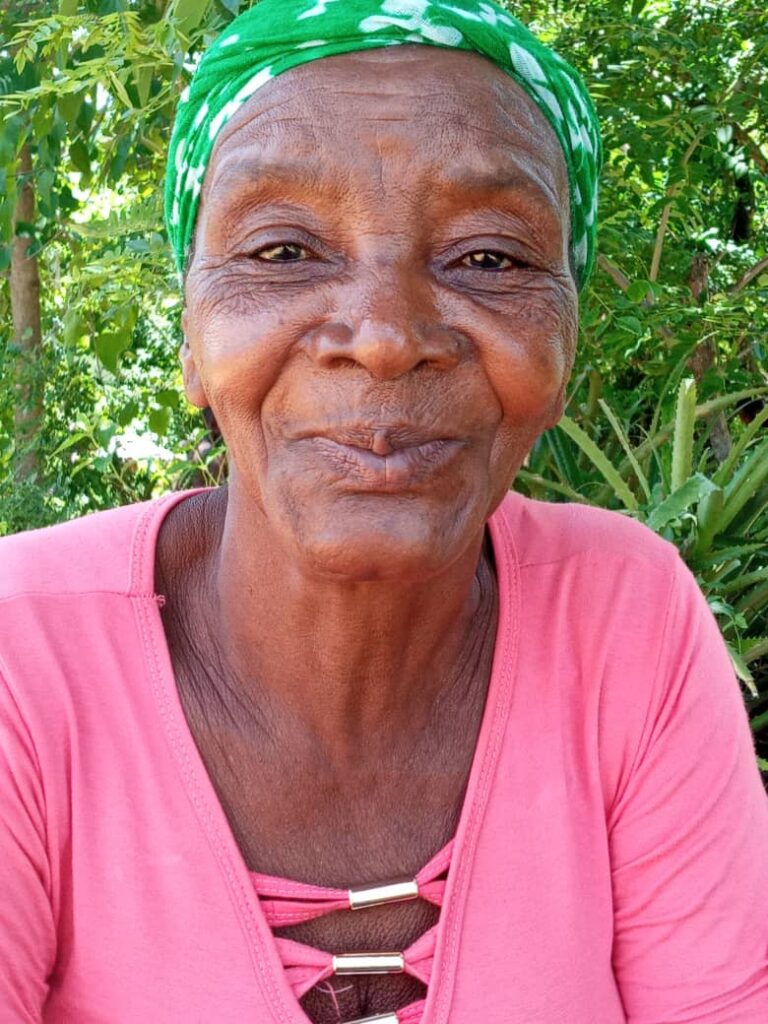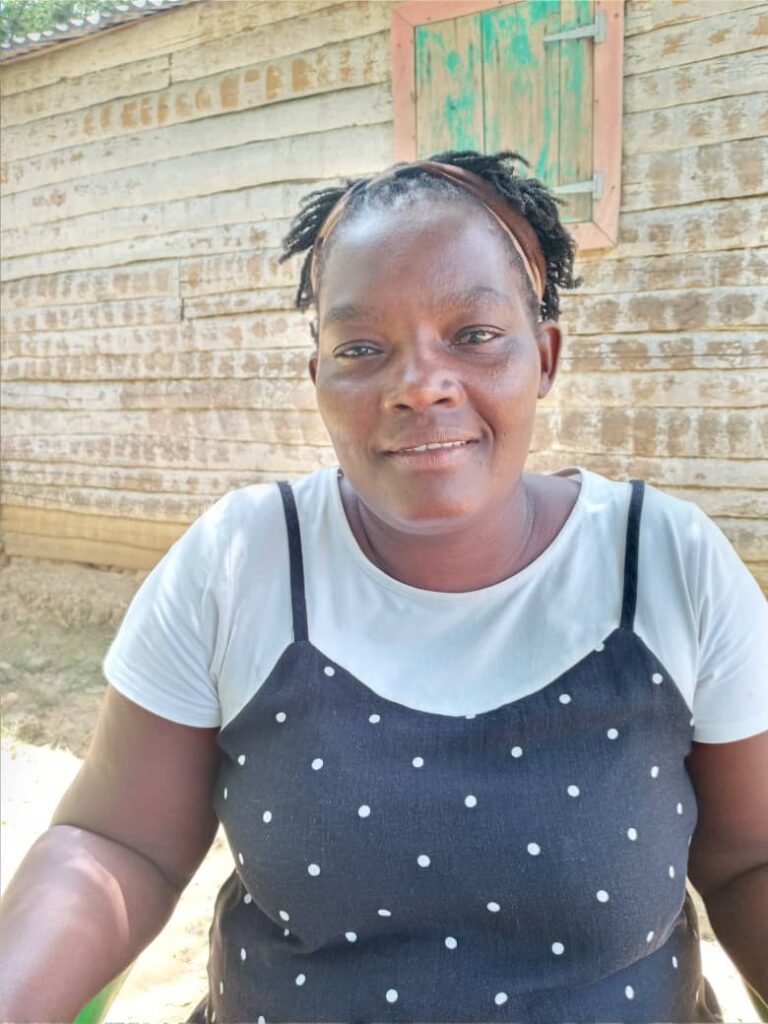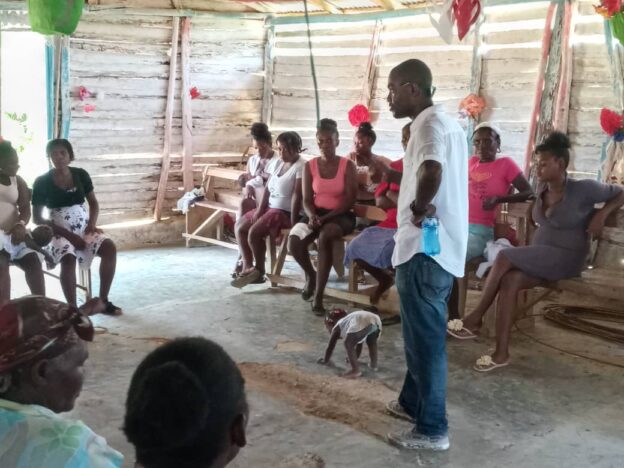Laskawobas commune straddles the Artibonit River in the southeastern part of the Central Plateau. A word like “straddles” misleads, however, if it suggests two pieces of the commune, one on either side of the water. The layout is much more complex, with multiple strands of the river and small lagoons cutting much of the center of the commune into odd-shaped pieces. The mountains and hills that run through the area only further complicated that landscape.
The CLM team has been working off-and-on in the commune for several years, serving hundreds of families, mostly in the north and the west. We had hit some of the harder-to-access stretches, but we had heard over the last few years of a pocket in the midst of areas we had worked in that we had not yet reached. The region is called “Wòch Milat,” and we completed selection of 100 families there earlier this month. Yesterday was the first day of initial training for almost half of the families.
The training is being held in Ramye, one of Wòch Milat’s larger neighborhoods. It’s a short motorcycle ride north from downtown Laskawobas, but the motorcycle only takes you to a canoe landing. Most of the year, you have to take a canoe across a dirty lagoon to reach the area. The training site is then a short, upward hike to the top of the hill.

Saintilia is a widowed mother of nine. She lives in Bisent, a smaller neighborhood next to Ramye. Her children are grown, and they no longer live with her. But she has two grandsons with her, one twelve and one ten, and she is fully responsible for both.
Her husband passed away just seven months ago, but she had been struggling with his bad health for a long time. She supported herself and her grandchildren as a weaver. She would buy latanye, a fibrous leaf, at the market in Kas, to the north, on Mondays, and spend the week weaving makout, a bag with a shoulder strap that many rural Haitians use. She’d sell them on Saturdays, at the market in downtown Laskawobas. She might make as much as 150 gourds for each one in good times. It wouldn’t amount to much, however, because the weaving was time consuming. She couldn’t do more than five in a week. But it was income.
But as her husband’s health deteriorated, her own strength suffered. She would support his weight with her right arm, and doing so awkwardly over the course of months left her arm so sore that she couldn’t weave any more. A friend saw her situation and lent her money to do small commerce, but that didn’t last long. The friend no longer has extra money she can let Saincilia use.
So she’s back to weaving, though it is hard with the constant pain in her arm.

Aniolie is from Ramye itself. She and her husband have six children, though one lives in Port au Prince with a family friend. “I keep in touch with him.” Her friend sends the boy to school, but Aniolie imakes an effort to contribute. “I don’t want to have to feel ashamed.”
She and her husband, Jean Ermane, have struggled to support their children by selling charcoal. They buy a sack from a neighbor, then Aniolie carries it to downtown Laskawobas for sale. “If I can get a good price for the sack, I sell it in one shot. Otherwise, I sit and sell it by the small pile.” Sometimes they buy a small tree and Jean Ermane turns it into charcoal for her to sell.
Occasionally, she sells fish. That depends on her finding a fisher willing to sell his catch on credit.
The area around Ramye is lush. The land looks fertile. So, one would expect the couple to be farming. But, as Aniolie explains, “It’s a good area to farm, but you have to have land. We don’t have anything you could call a garden, just the small plot our house is on.”
At the moment, the family is really struggling. Her boy in Port au Prince will go to school this year, and the oldest of her children and home, but she can’t yet see anything she can do for the other four.
